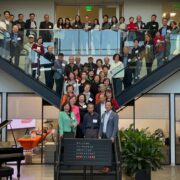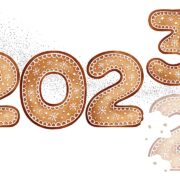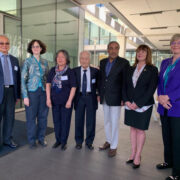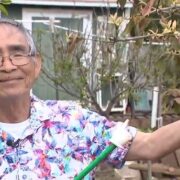Reinscribing Taiwanese Americans into Transpacific History
Written by Catherine Chou

Image Credit: Taiwanese American Greater Baltimore And Columbia Chapter Lunar New Year Celebration
By Maryland govpics/Flickr, License: CC BY 2.0
Taiwanese Americans written out of the History of the US
When Pew Research Centre, a leading non-partisan think tank based in the United States, released its latest “Key Facts” about Asian Americans in May 2021, one substantial demographic – Taiwanese Americans – was nearly missing. In a footnote, the authors of the Pew report explained that they opted to count people who specified “Taiwanese” as their ethnicity or national origin on the 2020 US Census as “Chinese” instead. Taiwanese Americans civic organizations responded quickly. After all, they had mobilized in 2010 and 2020 to encourage community members to take the extra step to identify themselves as “Taiwanese” on the US Census (which requires checking the box labelled “Other Asian” and typing or handwriting in a specific answer). As the directors of the Write-In Taiwanese Census Campaign noted in a joint letter, Pew produces its reports in part because “large data gaps exist about Asians and their experiences in America…As Taiwanese-Americans, we respond: Why was the data we reported manipulated? Why were our stories hidden?”
Pew’s response via its official Twitter account a few days later betrayed a set of shared assumptions about Taiwanese-Americans: first, that they are really Chinese (ambiguously defined in ethnic as well as national terms) even when they explicitly reject the label; and second, that their identity is so complex as to resist the tools of analysis applied to other ethnic groups. Nevertheless, describing all Taiwanese Americans as Chinese Americans means overlooking one of the significant developments in modern Asian and Asian-American history. This is the development of a distinctly Taiwanese-American identity and its geopolitical consequences, ranging from overseas pressure in the 1980s, from emigre communities and the US government for Taiwan to democratize, to continued grassroots advocacy for robust unofficial US-Taiwan relations.
Taiwanese Americans written out of the History of Taiwan
It is not only US institutions like Pew that categorize Taiwanese Americans as “Chinese,” however. Taiwan’s own government did the same for decades. Under KMT rule and ideology, emigrants from the “free area” of the Republic of China – Taiwan, Matsu, Kinmen, Penghu, and other offshore islands – were conceived as “overseas Chinese.” The few available studies on the subject show that the first wave of emigration from Taiwan to the United States beginning in the 1950s was primarily composed of “double migrants” (who fled the Chinese Civil War in 1949 and lived in Taiwan only a short while). A second wave began in the 1970s and 1980s, consisting in large part of graduate students who had grown up under the shadow of martial law and one-party rule by the Kuomintang (Chinese Nationalist Party or KMT), included proportionately more people who traced their ancestry in Taiwan to well before 1949. As Wendy Cheng has written, among these students, were many who “identified, or would soon come to identify, as Taiwanese.” This identity was cemented via “tightly connected institutional networks of sociality” and pro-democracy and pro-independence activism that aimed to bring an end to the dictatorships of Chiang Kai-shek and his son Chiang Ching-kuo and establish a Taiwanese nation in place of the Republic of China.
Arguably, the actions of these overseas students helped motivate the United States government – which had supported both Chiangs as a bulwark against communism in East Asia but recognized Beijing in 1979 – to pressure the KMT to democratize. Of course, since then, the types of people identifying as Taiwanese-American have expanded beyond this original cohort, including those whose parents saw themselves as Chinese and more multiethnic and multiracial members. Yet, the legacy of that initial period of Taiwanese American activism remains geopolitically significant. Indeed, three decades of democratization and continuing lobbying and campaigning by the diaspora have helped build robust bipartisan support in the US for Taiwan in the face of the PRC’s determination to take it over.
Until 2006, six years after the election of Chen Shui-bian, the first non-KMT president, the English title of the OCAC (僑務委員會) – the council of the Executive Yuan tasked with maintaining cultural and educational exchanges with the diaspora – was the “Overseas Chinese Affairs Commission.” During martial law, the OCAC and its affiliates also informed pro-democracy activists abroad, acting as extraterritorial enforcers of the KMT’s will. Perhaps the best-known initiative of the OCAC is the Overseas Chinese Youth Language Training and Study Tour. Established in 1966 and also known as Love Boat, it was explicitly geared towards building loyalty to the ROC instead of the PRC or an independent Taiwanese nation. The KMT sold itself to second-generation American and Canadian participants “as the true and real bastion of Chinese tradition and culture,” in the words of Joan S.H. Wang. Thus, until the early 2000s – and even beyond – Taiwanese emigrants and their children, who wanted to identify as Taiwanese, did so in opposition to the government that ruled Taiwan. Instead, they engaged in what Bing Wang and Min Zhou call “proactive disidentification from Chinese-Americans” – both from the PRC diaspora and also their fellow emigrants from Taiwan who supported the KMT or saw themselves as Chinese by culture and political orientation. Successive US Census reports show an increase in the number of responses that claim Taiwanese ethnicity. In 2000, the Census received118,048 Taiwanese-only responses and 144,795 responses combining Taiwanese and at least one other racial or ethnic group; in 2010 (the last year for which detailed Census data is publicly available), these numbers rose to 196,691 and 215,441, respectively.
Continued Challenges Faced by the Second and Third Generations
However, even as the term “overseas Chinese” has gradually fallen out of use for emigrants from Taiwan, second- and third-generation American diaspora face numerous logistical and linguistic difficulties when trying to connect with or relocate to Taiwan. Today, Love Boat takes the form of three programs, marketed as Taiwanese, not Chinese, in focus: the “Taiwan Study Tour,” “Taiwan Culture Program,” and “Taiwan Experience Program.” In addition, the AID (Assisting Individuals with Disabilities) program recruits several hundred volunteers “of Chinese or Taiwanese descent” to teach English in Taiwan for a summer. Yet major opportunities for sustained language training, such as the Huayu Enrichment Scholarship, which offers up to one year of tuition and living expenses, are not open to diaspora who hold a ROC passport.
More importantly, the OCAC and various Taipei Economic and Cultural Offices provide extremely limited information in English about how the children and grandchildren of Taiwanese migrants can obtain ROC residency, household registration, National ID, work permits, or enrol as study abroad or degree-seeking students at Taiwanese universities. The OCAC’s Facebook page contains no English-language posts at all, while TECO offices often advertise events only in Mandarin, leaving out the demographics most in need of assistance understanding Taiwan. Those of Taiwanese descent born and raised in the US (who possess meagre literacy rates in Chinese characters) have resorted to mutual aid and crowdsourced documents. These are compiled in online social networks like Subtle Taiwanese Traits. Here, they discuss the benefits and drawbacks of claiming dual nationality, for example. However, such an impetus can make functioning in Taiwan much easier but also make employment in specific sectors in the US, like security or policy, more difficult. Moreover, although several storiesappeared in the international press about record numbers of young Taiwanese-Americans applying for ROC passports, Gold Cards, or other entry permits to move to Taiwan in during the coronavirus epidemic in 2020, there was virtually no messaging by the government or civil society in Taiwan welcoming young diaspora as a group and directing them towards pathways for residency.
For a country that greatly restricts the ability of foreigners to acquire dual nationality, and that also has one of the lowest birth rates in the world, the second-and third-generation diaspora in the United States represent under-tapped human capital. Yet, for both US institutions like Pew, and Taiwanese government and civil society, it seems, fuller recognition of the demographics, diversity, social networks, identity formation, and political and professional commitments of Taiwanese Americans – and the impact of their “civic transnationalism” – remains elusive.
Catherine Chou is a second-generation Taiwanese American and an assistant professor of history at Grinnell College in Iowa
This article was published as part of a series on Taiwanese Americans.
– Source: original post
– Posted on: 06/24/2021





